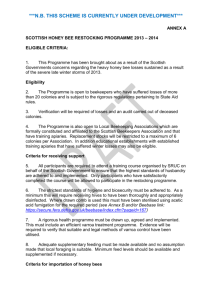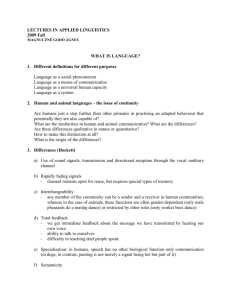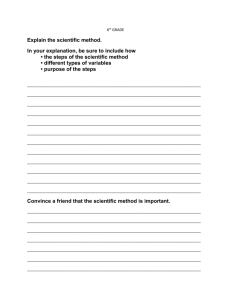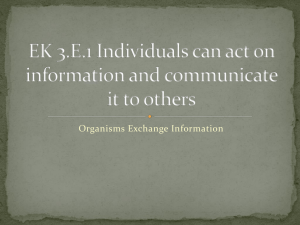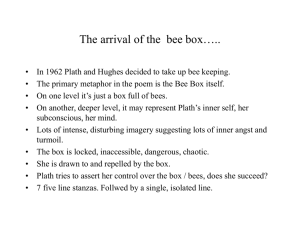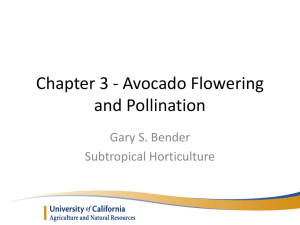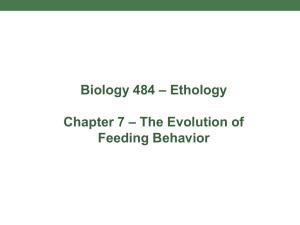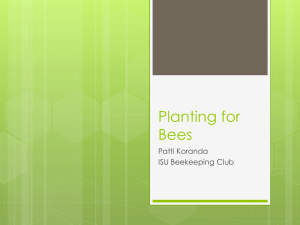Bees_in_decline
advertisement
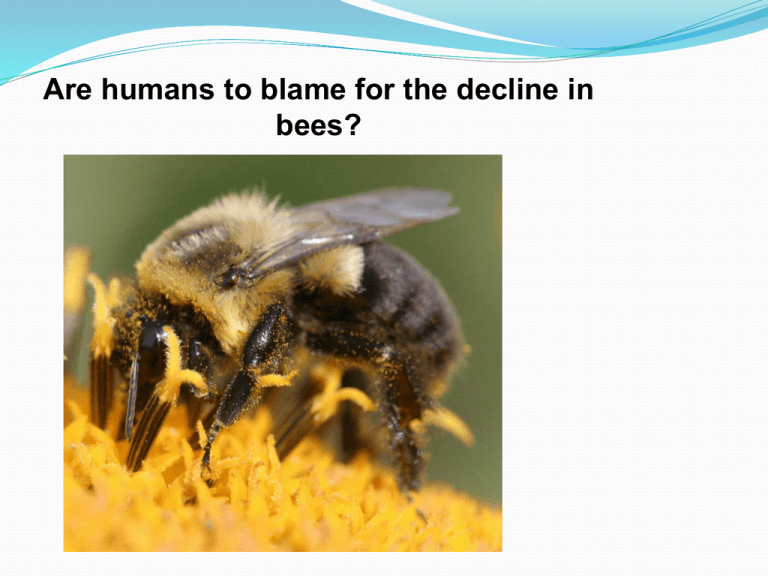
Are humans to blame for the decline in bees? Learning objectives Changes in the environment affect the distribution of living organisms. Animals and plants are subjected to environmental changes. Such changes may be caused by living or non-living factors such as a change in a competitor, or in the average temperature or rainfall. Case study: A big question.... Point 1 ‘Are humans to blame for bees dying out?’ Yes, humans are to blame P E E Point 2 Point 3 P P E E E E Point 1 No, humans are not to blame P E E Point 2 Point 3 P P E E E E evaluated and critically compared Overall, I feel that humans are/ are not to blame because... In some areas, flowering plants are flowering earlier so there are big gaps between flowers that would normally flower one after the other. This prevents the bees from having a constant source of food. Are humans to blame for bees dying? There is information around the room. You have 4mins to read the posters and note down anything you think might help you to answer the main question. You may not have enough time to look at all the information, make sure that each half gets information from different sides of the room. You will then have 2 minutes to share all the information in your groups. Can we categorise the arguments? Living = * Non living = Not sure = ? • Is this enough? Why should we bother doing extra research? Can we answer the question confidently yet? You will need to research 1 area in more detail from the information that you already have to get a better understanding of the issue. I think that humans are/are not to blame for bees dying because..... (Explain your arguments giving as much detail and facts as you can) Another conclusion that could be made by someone else such as...(conservationist/child/someone who lost a relative to a wild animal/someone believes animals should stay in the wild). They believe that... This is because... In some areas, flowering plants are flowering earlier so there are big gaps between flowers that would normally flower one after the other. This prevents the bees from having a constant source of food. Many farmers still use pesticides on their crops. In order to get more food. Pesticides kill most insects including bees. This reduces the amount of habitat that bees can use. Varroa mites are becoming increasingly common in the UK and much of the world. They are parasites and feed on the bees themselves. This severely weakens individuals and the hive often spreading killing individuals slowly over several weeks. With many gardeners choosing have decking in their garden, the amount of plants in the garden is decreasing. Lots of new houses are being built all the time and this decreases the amount of land available for flowering plants The BBC reported that 2011 had the warmest April on record with a very low rainfall. Without rain, plants cannot grow quickly and make nectar during flowering. In the 1930s, the amount of beekeepers in the UK was 3 times more than it is today. Also, with fewer trees as suitable nest sites, bees have no where to live.


